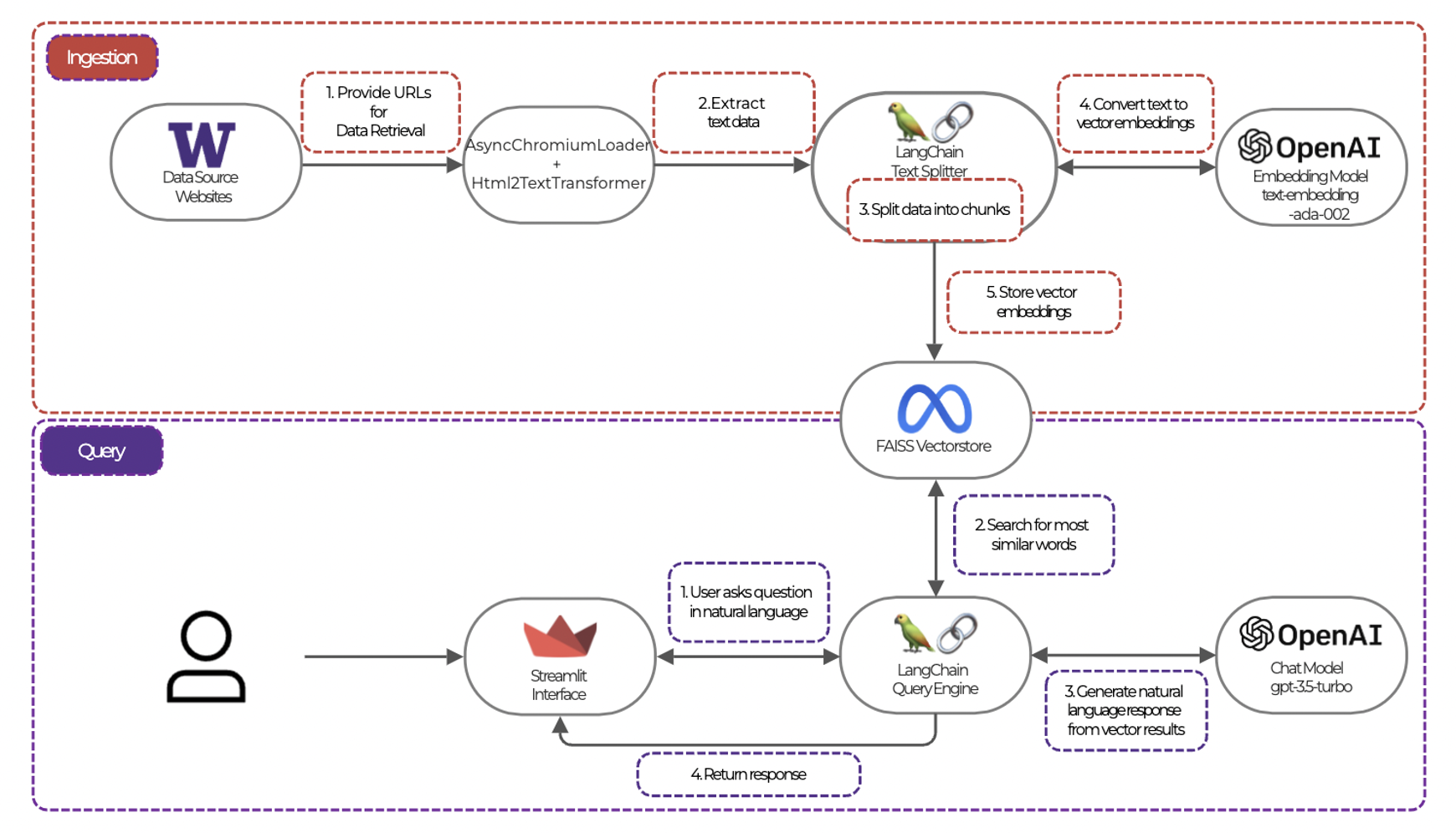EquityEngine: A Pathway to Inclusive and Personalized Engineering Education
PIs: Professors Denise Wilson and Sep Makhsous
EquityEngine is a multi-phase research initiative aimed at enhancing the educational experience for engineering students, particularly those with attention disorders such as Attention-Deficit/ Hyperactivity Disorder (ADHD), in post-secondary education. By leveraging the transformative potential of artificial intelligence (AI) and adopting a participatory design approach, this research focuses on developing a multifunctional AI-driven platform that provide tailored support and enhances focus, motivation, self-agency, and educational outcomes for engineering students.
Research Directions

Three core pillars of our research: Accessibility, Engineering Education, and Artificial ntelligence. By intersecting these areas, we aim to create a more inclusive and engaging learning environment for college students in engineering programs, and more broadly, across STEM disciplines.. The overlapping region represents the synergy where all three pillars converge, driving the development of tailored, AI-driven solutions that enhance both educational outcomes and mental-welling.
Background and Motivation

Existing literatures reveals a pronounced scarcity of AI-driven learning tools developed specifically \for post-secondary STEM education. The majority of existing tools are designed primarily for K-12 students, overlooking the distinct, more advanced challenges faced by SLWD in higher education.
Targeted Population
ADHD is the most common condition associated with attention disorders, affecting 21.8% of the SLWD population and up to 13.8% of college students reported in Spring 2024. In addition, students with major depressive disorder also face substantial concentration challenges. Besides those with formal diagnoses, maintaining focus and motivation has been a common challenge among post-secondary engineering students.
Methodology

The mixed-methods approach serves as the primary strategy guiding our user studies, helping us understand user needs and establishing the foundation for our co-design sessions.
Iterative design and participatory design will be the main methodologies guiding our design process. We will use co-design sessions to identify evidence-based design principles together with our targeted users and educators. Subsequently, we will create a low-fidelity paper prototype based on these principles and utilize heuristic evaluation alongside usability testing to gather comprehensive feedback and insights from our participants. This feedback will be used to refine the paper prototype before the next iteration of the design.
Proposed Solution

Three-dimensional real-time data will be measured to guide our Adaptive Intervention Module:
- Physiological Signals (e.g., heart-rate, eye-tracking);
- Behavioral Signals (e.g., click frequency, tab-switching, facial expression);
- Contextual Signals (e.g., assignment difficulty, pop-up responses).
Based on these real-time measures, the system will generate an Engagement Index. This index is then fed into a tiered decision logic that determines the interventions (e.g., micro-prompts, task adjustment, contextual re-engagement).
Archive Prototype

The technical objectives of the archive prototype were centered around effectively implementing the Retrieval-Augmented Generation (RAG) architecture, a sophisticated framework designed to enhance the chatbot's responsiveness and accuracy in providing user-specific information sourced from university websites.
- LangChain's OpenAIEmbeddings was used to convert preprocessed text into high-dimensional vectors that capture semantic context, ensuring accurate and relevant chatbot responses. For efficient storage and retrieval, the team evaluated robust vector stores like FAISS and Pinecone. Factors such as deployment ease and integration capabilities will guide our selection, optimizing the chatbot's ability to provide timely and precise assistance.
- The retrieval-based chatbot was built with LangChain's RetrievalQAWithSourcesChain, utilizing vector similarity for accurate, context-aware answers. The user interface is developed using Streamlit to ensure smooth and intuitive interactions, enhancing real-time responsiveness.